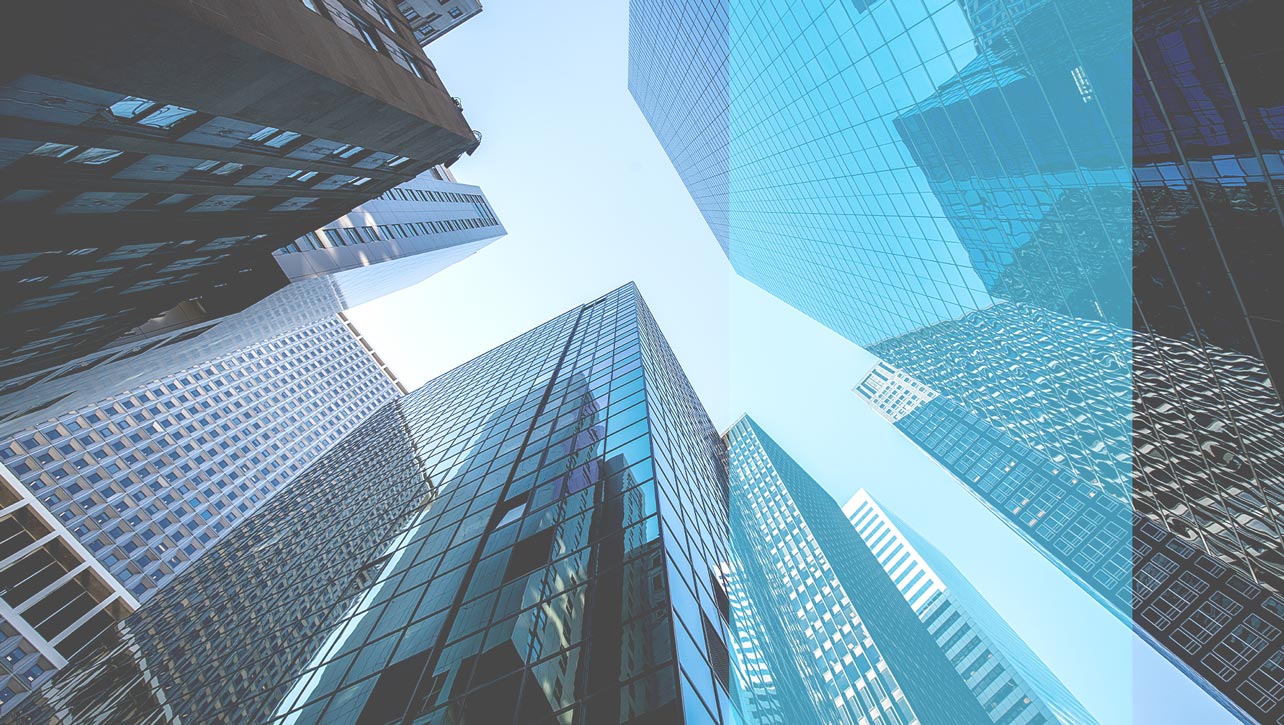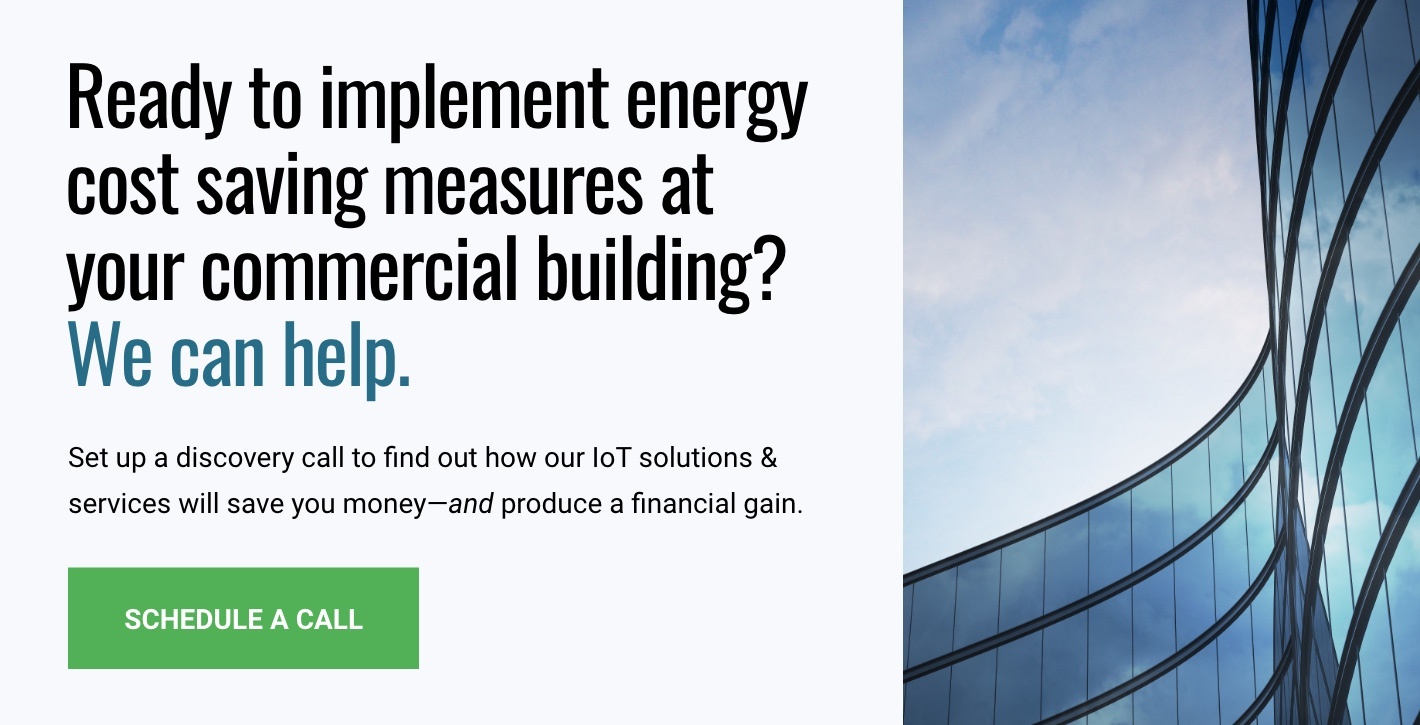New York City doesn’t do “small”—that became evident once again with the passing of Local Law 97 in 2019. Known also as the Climate Mobilization Act, this ambitious piece of legislation aims to cut greenhouse gas (GHG) emissions in a big way, by 80% over the next 30 years. For commercial buildings—which are the target of the new law—that means adopting a new way of thinking about energy use. So what exactly does Local Law 97 require, and what will it take for building owners to meet this aggressive goal? Keep reading to find out.
Don’t know where or how to get started on the road to Local Law 97 compliance? We can help—schedule a call with us to find out how.
Local Law 97: A Summary
Why the law was enacted: Buildings are responsible for a large portion of greenhouse gas production in the United States due to their reliance on energy produced by fossil fuels. The burning of fossil fuels produces carbon dioxide (CO2), one of the primary greenhouse gases; therefore, carbon dioxide and equivalents (CO2e), a consequence of hydrocarbon fuels including fossil fuels, serve as the basis for measuring the impact of all GHG. In NYC, large commercial buildings account for 65% of the city’s annual CO2 emissions. The new law forces owners of existing buildings to take action now to reduce their property’s carbon emissions.
[bctt tweet=”In NYC, large commercial buildings account for 65% of the city’s annual CO2 emissions. Local Law 97 forces owners of existing buildings to take action now to reduce their property’s carbon emissions.” username=”iotacomm”]
Purpose of the law: To reduce greenhouse gas emissions citywide. As the bill states: “There shall be, at minimum, a 40% reduction in citywide emissions by calendar year 2030, and an 80% reduction in citywide emissions by calendar year 2050, relative to such emissions for the base year for citywide emissions.”
Who it applies to: New and existing commercial buildings larger than 25,000 square feet must meet annual carbon intensity limits during each compliance period based on building type. (Groups of two or more buildings with a total area of more than 50,000 square feet are also required to comply if they are under the same tax lot or part of the same condominium project.) See the table below for the building classifications and emission limits. Some buildings are exempt from this law, such as city-owned buildings, buildings with one or more rent-regulated units, other types of affordable housing, and worship spaces.
Timeline: The legislation sets out building limits through 2050 but takes an incremental approach to the reduction by setting periodic goals. The first two goals have been set: 2024-2029, and 2030-2034. (For years 2035 through 2050, emissions limits will be set by January 2023.) Starting in 2025, all buildings must submit an annual report certified by a registered design professional that the building is in compliance, by May 1 each year. Buildings that fail to comply will incur a fine of $268 per metric ton that their carbon footprint exceeds the limit annually.
What are “building emissions”? All buildings use energy to heat, cool, light, and power the activities taking place inside. Energy is typically produced either onsite or offsite by fuel combustion, a process that emits greenhouse gases (including carbon dioxide) into the air. Taking into consideration the composition of the utility that supplies the energy, carbon emissions are measured by converting the total number of kilowatt hours (kWh) used into kilograms of carbon released per square foot. The resulting number is your building’s “energy density” and associated greenhouse gas emissions, or ton of CO2 per square foot.
NYC CO2 Emission Guidelines For Local Law 97
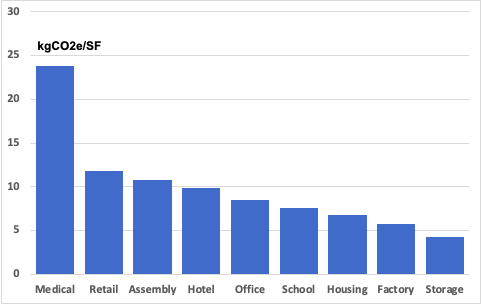
The above chart shows the proposed CO2e (equivalent) emissions measured in kilograms per square foot of building space. These CO2e guidelines represent what commercial buildings larger than 25,000 square feet should be trying to achieve by 2024.
To put these numbers in context, here’s how the law’s 2024 thresholds compare to what we estimate as the current CO2e emissions levels. To derive the estimate of current CO2e emission, we used the DOE national average energy intensity per square foot and the EPA’s emissions calculations of kWh energy to kilograms of carbon dioxide. Below, the CO2e emissions reductions are compared to the Local Law 97 guidelines by industry.
Estimate Of CO2 Emission Reductions To Comply With Local Law 97
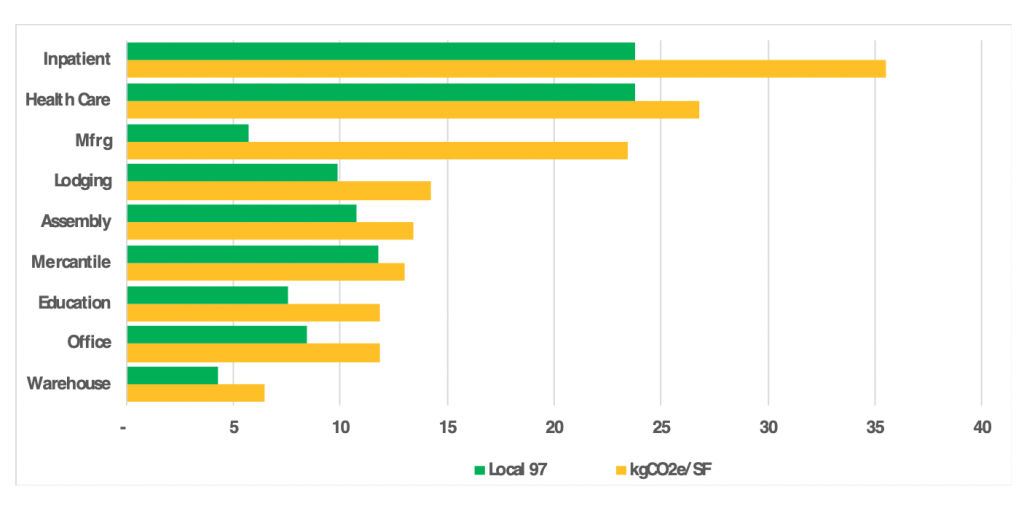
Given the extent of emission reductions by building occupancy type, the question for property owners is how to reduce their respective energy footprint in order to reduce CO2e emission levels. There are several energy conservation measures (ECM) that will reduce energy intensity and CO2e emissions. In addition, not only do ECM initiatives reduce CO2e emissions, they reduce building operating costs.
For building owners, the first step is measuring energy intensity using the EPA Energy Star framework and evaluate approaches to reduce the energy and GHG emission footprint.
The Cost Of Noncompliance
In the case of Local Law 97, noncompliance is costly: Buildings that fail to comply will incur a fine of $268 per metric ton that their carbon footprint exceeds the limit annually. That translates into steep fines for just about every type of building. The cost of implementing various efficiency measures will vary, but the money you’ll save over time as a result of those measures will exceed the cost of inaction. Plus, you’ll have demonstrable proof of your efforts to become more environmentally sustainable, a characteristic that has business value in and of itself.
What is the cost of non-compliance with NYC Local Law 97? In Figure 3 the estimated cost of non-compliance is calculated using both DOE national average energy intensity per square foot and the EPA’s emissions calculations. The following chart shows the potential impact by building occupancy category. The fine for non-compliance is currently $268 per metric ton.
Estimated Costs For Non-compliance With Local Law 97
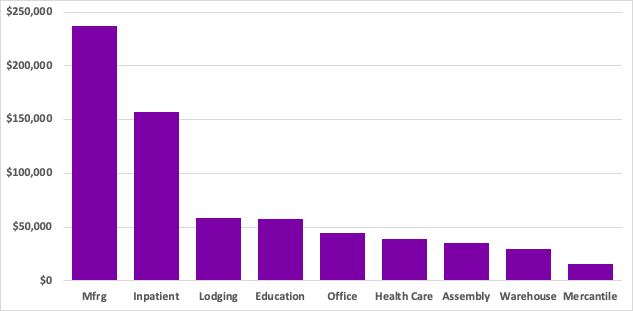
How can emissions be reduced? Buildings use energy differently and have unique energy profiles, so building owners will need to design reduction strategies tailored to their specific needs. The most effective strategies will likely employ a mix of tactics, including energy retrofits to improve efficiency and reduce energy demand, and increasing the percentage of energy derived from renewable power options.
Complying With Local Law 97: An Internet Of Things (IoT) Approach
There’s no denying that reducing greenhouse gas emissions is the right thing to do for the environment. And with the increasing emphasis on business sustainability, there’s also no doubt that companies with buildings located in New York City—whether they already have a governance policy that includes sustainability in place or not—will reap the benefits of embracing sustainable practices. But make no mistake: Building owners need to start coming up with a game plan now in order to significantly reduce their energy consumption over the next four years as required by Local Law 97.
According to some estimates, as much as 30% of the energy used in commercial buildings is wasted on inefficient machinery and equipment, which represents plenty of room for improvement. Building owners are fortunate that technology advancements have made it easier to pinpoint areas of waste, as well as design strategies for controlling and optimizing energy efficiency. The Internet of Things (IoT) is one of the newest technologies being applied in this area today. It underlies the “smart” building concept, which connects various building systems and considers them holistically. The whole-building energy optimization afforded by the IoT makes more advanced energy strategies (and therefore greater reductions) possible.
By some estimates, large commercial buildings using a collaborative IoT platform can cut energy use by 29% per year.
In many cases, employing the IoT can speed up the improvement process. Not only can you get up and running relatively quickly with IoT sensors, but the detailed information they produce about your building also helps you determine the most impactful strategies faster than with some other methods. In addition, IoT analytics platforms are capable of doing advanced calculations using a variety of data inputs, which produces a more sophisticated and effective strategy. (Read about some specific IoT-based energy efficiency strategies here.)
The IoT Model Of Energy Management: 3 Steps
Employing the IoT for energy management means taking a proactive approach about what measures will yield the best reduction in greenhouse gas emissions. The prescriptive IoT model follows these three steps:
1. Learn about your building’s current energy profile.
Most building operators don’t have deep visibility into where and how a facility’s energy is consumed, nor do they understand or know the patterns of use. But before you can consider implementing any specific measures to gain control over your energy use, you need to understand how your building currently uses energy.
IoT sensors are capable of gathering detailed data about your facility, monitoring the energy use of individual machinery as well as every component of building operations (HVAC, lighting, ventilation, etc.). This “energy footprint” tells how and when your building uses energy, and serves as a baseline of your typical consumption pattern. By continuously monitoring those components, you can gain greater insight into your current energy consumption and building environment and make more targeted improvements.
2. Identify areas of opportunity.
Once you know which systems are primarily responsible for driving energy use, you can begin to identify areas of excess. You can also benchmark your energy usage against other buildings in your industry, which will help ferret out areas of unusually high consumption. Rather than shooting in the dark, you can then determine the best opportunities in your building for controlling and optimizing energy efficiency. IoT and analytics provide a framework to measure, in near real time, both energy consumption and emissions levels as well as identify areas to further reduce energy use, cut costs, optimize efficiency, and drive sustainability.
3. Develop an energy management strategy.
Not all energy management strategies work the same. Armed with specific knowledge about your building’s operations, you can begin to develop an energy efficiency strategy that will have the most impact. This includes not only ways to increase efficiency of operations and reduce energy demand, but also how to incorporate renewables into your energy portfolio in a way that makes the most sense for you.
Many IoT platforms have an advanced analytical component that’s capable of bringing together a number of different data points to identify opportunities for energy optimization, everything from weather data to occupants’ behavior to cyclical and seasonal factors. With the right data variables—collected, correlated, and analyzed by the IoT—it’s possible to design your building’s optimal approach to energy management for guaranteed greenhouse gas reductions.
Need an IoT partner that can help with Local Law 97 compliance?
Talk to us at Iota. We can help you achieve the goals and avoid costly penalties set by Local Law 97 without having to navigate the complexities of energy use and management yourself. Our experienced team will put our wireless IoT sensors and advanced data analytics platform to work in your building, providing you with:
- An initial audit of your building to assess possible approaches to energy conservation
- Remote monitoring of your facility to create an energy profile
- Benchmarking your energy profile to find areas of potential improvement
- A roadmap defining the most feasible approach to energy optimization—including energy procurement from renewables
- Assistance in the implementation of energy savings initiatives
- Continued monitoring and measuring and verification of initiatives that were deployed so you reach your required carbon emissions goal.
If you’d like to learn more about using the IoT for Local Law 97 compliance, contact us today!

